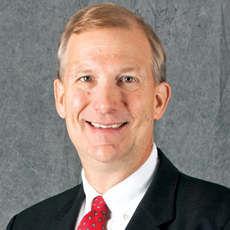
The word rehospitalization has become so embedded in long-term caregivers’ lexicon, it’s a wonder my computer still tags it as a possible misspelling.
The word has been impressed into my keyboard, just like the minds of skilled nursing operators’ minds, seemingly constantly in recent years.
Now we have a couple more reasons to dally over the term: Study results are causing experts to question the campaign to lower rehospitalization rates.
The study results have federal officials citing “deep concern.” As a result, the Centers for Medicare & Medicaid Services says it will pause to digest what’s actually happening to see if any strategies should change.
One of the studies, for example, found that deaths from heart failure and pneumonia within 30 days of hospital discharge have risen since the program started in 2012. The fact that there was no pilot program before this Affordable Care Act provision was incorporated rankles many in the medical community.
So could a re-do be in order after federal initiatives have driven hospital and post-acute partners on almost maniacal quests to stop patients from returning to the hospital? Not yet.
But the mere thought of wavering on the mission of reducing quick returns to the hospital is like questioning whether hotdogs and apple pie belong in American lore. Then again, a chicken stand is now America’s most popular fast food outlet and the number of nation’s best desserts goes way beyond fruit-filled confections, so nothing should be ruled out.
Long-term care providers were forced to get into this arms race, so they have more than a passing interest in the implications of these studies. Skilled care providers, in fact, have rightfully celebrated successes in lowering rehospitalization rates for their residents.
But the researchers now ask: To what good end?
Some believe hospitals gamed the system for the Obamacare program attacking rehospitalization rates by changing administrative processes. That wouldn’t be a stretch for a crew notorious for abusing “observation stay” status for patients, often fouling their efforts to qualify for nursing home coverage.
Hospitals’ business motives have further come into question with researchers questioning their calculations in risk-adjusted readmission rates. Accusations of cherry-picking patient populations also have been levied. None of these carry good implications for the patient, of course.
One prominent researcher, Gregg Fonarow, co-chairman of cardiology at UCLA’s David Geffen School of Medicine, has called on Congress and the administration to revise the program. In a New York Times article on the subject Friday, he cited “tremendous pressure” on cardiology colleagues by their hospital administrators to act in the facility’s best financial interest, if not necessarily the patient’s.
Pressure may very well come for CMS and regulators to sort out what could be a growing mess since more conditions are being observed in the program. But here’s the kicker: No matter what comes of this re-examination of policies, this is what findings will mean for skilled nursing providers: Nothing.
It appears that hospitals and acute-care decision-makers will be taking the heat for any questionable practices uncovered. As post-acute providers, long-term care operators need only concentrate on delivering good follow-up care and rehabbing any appropriate individuals under their roof.
In other words, their mission remains the same.
Could a refocusing of priorities mean a slower flow of hospital discharges to SNFs? You bet. But in this day and age, it also could mean a retrenching of discharges directly from hospital to home. That could yield skilled providers a “new” stream of admissions.
Skilled care and rehab providers should remember that the key for hospitals and surgery centers will remain who’s a good post-acute partner? Who gets the job done efficiently and dependably, with long-lasting results?
That should give long-term care providers all the direction they need. Embed in the public not a number associated with a rehospitalization rate. Rather, make them think of you because of your reputation for friendly, loving care that gives residents their best chance to thrive, no matter what their station in life.
Follow Editor James M. Berklan @JimBerklan.




